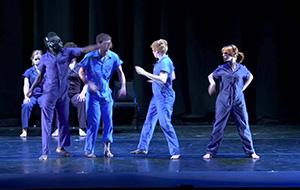 The safety of children in the dance student is something which is both a right and a legal requirement, with dance teachers obliged to uphold their policies on protecting the students who attend their studios for lessons.
The safety of children in the dance student is something which is both a right and a legal requirement, with dance teachers obliged to uphold their policies on protecting the students who attend their studios for lessons.
On a basic level, studios must be properly equipped for dance, with adequate flooring and enough space for the students who attend. This is in addition to supporting the emotional health and wellbeing of students, engaging with and enjoying an environment that is nurturing and supportive. This provides the joy of dance in addition to the physical safety aspect of correct anatomical instruction and injury prevention.
On a more complex level, dance students must also be safe from any form of abuse, be it when they are involved in dance, sport or any other associated activities. Gone are the days when dance students were manhandled into the correct alignment. Of course, dance is physical and touch is therefore an essential component of teaching, however parents, guardians and even students may be now hyper-aware of this, and feel uncomfortable about human contact and touch. Many teachers ask permission to use touch to aid in their teaching or corrections, in order to respect the student.
To further counter the limits of safety awareness in the twenty-first century, many dance teachers now operate with an ‘open door’ policy, in which parents are invited to view and engage with their child’s class to create a transparent and welcoming environment. Psychological safety is therefore just as important as physical safety, in that the student trusts they are safe during dance lessons. Many dance schools focus on building self-esteem and the emotional wellbeing of students in their duty of care, encouraging the students to communicate with and respect each other, and the teacher also.
The issue of child safety is one that is ever-present. For dance teachers the world over, developing a comprehensive safety policy is essential to protect both students and teachers.
Category: News
Use of the mirror
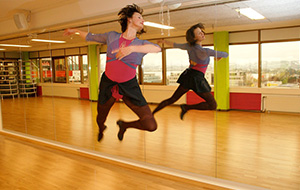 Mirrors in dance studios can be both a help and a hindrance. On one hand they can promote the aspiration towards a high level of technique in being able to observe the body as it works, yet equally it can encourage an unhealthy relationship with the body and what is capable of doing. Being aware of the body’s alignments is ultimately useful in working correctly and safely with good technique, its feedback being beneficial to a dancer’s training and daily routine.
Mirrors in dance studios can be both a help and a hindrance. On one hand they can promote the aspiration towards a high level of technique in being able to observe the body as it works, yet equally it can encourage an unhealthy relationship with the body and what is capable of doing. Being aware of the body’s alignments is ultimately useful in working correctly and safely with good technique, its feedback being beneficial to a dancer’s training and daily routine.
However mirrors can seem ever-present for dancers. For those that are young and susceptible to influence, this could have a detrimental effect on dancers’ abilities to abandon themselves in dance and trust their own bodies. Mirrors may equally encourage dancers to be too focused on their efforts in the studio: a large part of dance is also enjoying the movement and performing it, rather than being caught up with technique constantly.
This begs the question as to whether dancers learn better by observing themselves in the mirror to utilise correct technique, or whether it is best to learn without mirrors, to feel the movement and learn the movement sensations that way. This of course depends on whether there is an option of mirrors at all in a dance studio, and whether using them actually means dancers are just creating shapes rather than working the movement from the inside out.
Mirrors can be so prevalent in dance today, however, that it could be that dancers are so visually stimulated they increasingly rely on mirrors for visual feedback, rather than personally feeling corrections. Additionally mirrors can be used to keep in time with the other dancers in the room and even copy what they are doing, rather than trusting the body and listening to the music to create the same effect. Dancers can spend hours in front of mirrors, analysing their reflection and it can be easy to become overly critical and obsessive.
Strictly Ballroom – The Musical
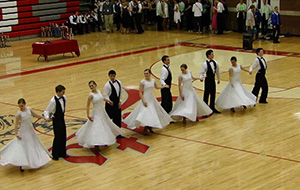 Strictly Ballroom – The Musical, the musical theatre adaptation of the much-loved film will be playing at the West Yorkshire Playhouse in December, and full casting has recently been announced for the UK premiere. The musical tells the story of a championship ballroom dancer, Scott, risking his successful career by performing unusual routines, in a bid to remain true to himself and his own interpretation of dance.
Strictly Ballroom – The Musical, the musical theatre adaptation of the much-loved film will be playing at the West Yorkshire Playhouse in December, and full casting has recently been announced for the UK premiere. The musical tells the story of a championship ballroom dancer, Scott, risking his successful career by performing unusual routines, in a bid to remain true to himself and his own interpretation of dance.
The film version was created by Baz Luhrmann and his wife Catherine Martin, and since then the show made its world premiere at the Sydney Lyric Theatre in April 2014. Rising star Gemma Sutton will star as Fran alongside Sam Lips, who will make his UK debut as Scott. Sutton also starred in the recent productions Gypsy and The Go-Between, alongside Imelda Staunton and Michael Crawford respectively, and performances to Lips’ name include Pippin and Wicked.
Another name on the up is the definitive Drew McOnie, who will both direct and choreograph the production. His Jekyll and Hyde recently ran at The Old Vic to great acclaim, a great coup for the Olivier Award winner. The Strictly Ballroom cast also includes Tamsin Carroll (Miss Saigon), Stephen Matthews (The Lion King), Julius D’Silva (Made in Dagenham), Richard Grieve (Priscilla – Queen of the Desert), Eve Polycarpou (In the Heights) and Charlotte Gooch (Dirty Dancing).
There is no word yet as to whether the show will tour following its run at the Playhouse in Yorkshire, on from 6 December until 21 January 2017, with previews from 30 November. Dealing with such a popular and well-loved story it seems audiences can only hope that the production will journey around the country and then down to the capital.
Alvin Ailey American Dance Theater
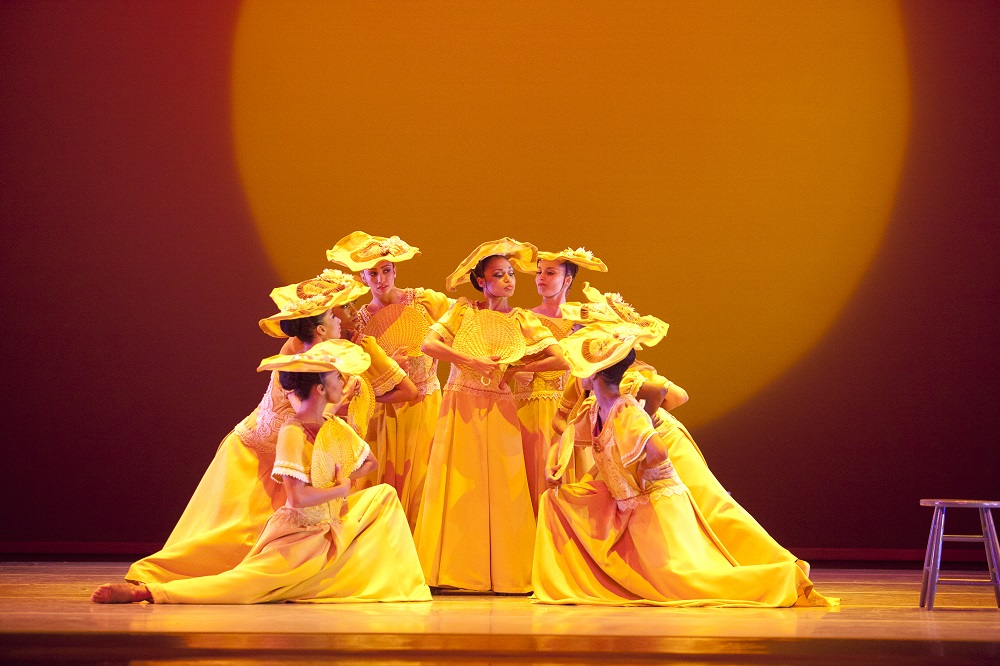 In a few short weeks, the iconic Alvin Ailey American Dance Theater will be descending on the UK to delight and impress audiences all over the country. As one of the world’s most popular dance companies, its return to the UK is further significant due to the fact it is the first time in over six years. During the company’s performances in the UK, it will present 10 works during six exhilarating programmes, including its Revelations masterpiece.
In a few short weeks, the iconic Alvin Ailey American Dance Theater will be descending on the UK to delight and impress audiences all over the country. As one of the world’s most popular dance companies, its return to the UK is further significant due to the fact it is the first time in over six years. During the company’s performances in the UK, it will present 10 works during six exhilarating programmes, including its Revelations masterpiece.
The tour will start with a two-week, four-programme season at Sadler’s Wells, London on 6 September and it will conclude at Festival Theatre, Edinburgh on 19 October. The tour will see Alvin Ailey American Dance Theater visit 10 venues, rather than just limiting its performances to London only. What a treat for regional audiences too! The company’s autumn tour marks the fourth time Ailey is presented by Dance Consortium, a group of 17 large scale venues located across the UK.
Alvin Ailey American Dance Theater, founded in 1958, is recognised by the US Congress as a vital American “Cultural Ambassador to the World”, in its presentation of constantly high-quality work and performances which are second to none. Under the leadership of Artistic Director Robert Battle (the Company’s third artistic leader in its almost 60 year history), Ailey’s performances celebrate the human spirit through the African-American cultural experience and the American modern dance tradition. This was initiated by Ailey’s reliance on his ‘blood memories’ of growing up in the US.
Since 1958, Ailey’s performers have performed for over 25 million people in 71 countries, on a total of six continents.
Ballet in the Maldives
 Ballet is without doubt a love worldwide, however focus has recently been on the Maldives, where guests at two luxury hotels will be lucky enough to experience exclusive ‘floating’ ballet performances. Guests staying at PER AQUUM Niyama and PER AQUUM Huvafen Fushi on the nights of 21 and 23 August will be treated to special performances that fuse the choreography of iconic ballets Swan Lake, Giselle, Carmen, Scheherazade and Don Quixote.
Ballet is without doubt a love worldwide, however focus has recently been on the Maldives, where guests at two luxury hotels will be lucky enough to experience exclusive ‘floating’ ballet performances. Guests staying at PER AQUUM Niyama and PER AQUUM Huvafen Fushi on the nights of 21 and 23 August will be treated to special performances that fuse the choreography of iconic ballets Swan Lake, Giselle, Carmen, Scheherazade and Don Quixote.
The shows will take place on specially-designed stages over the water, presented by Russia’s Mariinsky company this summer. The brains behind the project is British-born dancer Xander Parish, who became the first British dancer to join the Mariinsky in 2010. Arranging the performances single-handedly, he has specially selected his cast of Mariinsky dancers for the Maldives trip to perform. The dancers include Oksana Bondareva and Renata Shakirova, set to delight hotel guests during their stay.
The unique performance event is taking place at two of the most fashionable and exclusive hotels in the Maldives. PER AQUUM Huvafen Fushi is a private island hotel that hosts the only underwater spa in the world, and PER AQUUM Niyama was the proud owner of the world’s first underwater nightclub, before recently revamping it as a restaurant. What better element to add to guests’ stays than a floating ballet performance whilst they are holidaying.
Aspiring ballet dancers amongst the guests will also have the chance to take part in one of several dancing masterclasses during the Mariinsky’s time in the Maldives. These classes will be run by Parish at both resorts throughout his visit encouraging guests to engage with a new activity, inspired by the performances from the dancers. This may well be a welcome alternative to the usual fitness classes offered at resorts such as these, or just a chance to try something new and have fun whilst doing so.
New “World of Dance” competition
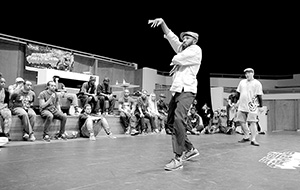 Pop star and reality television show judge Jennifer Lopez is said to be on the hunt for the best dancers in the world for a new reality competition series. She has partnered up with executive bosses at the NBC network to produce the series, and international dance brand World of Dance. The show will feature elite dancers from around the globe who are aspiring to break into the professional dance industry.
Pop star and reality television show judge Jennifer Lopez is said to be on the hunt for the best dancers in the world for a new reality competition series. She has partnered up with executive bosses at the NBC network to produce the series, and international dance brand World of Dance. The show will feature elite dancers from around the globe who are aspiring to break into the professional dance industry.
The hugely successful singer began her career as a dancer, and is now using her first passion to help a new generation of professional dancers to make their mark in the industry and kick-start their careers, with the show which will be titled “World of Dance”. Jennifer Lopez will executive produce the series with her long-time partner Benny Medina. She is well versed in this area, having previously served as a judge on the hit singing series “American Idol”, and also produced 2007’s “Dancelife”, which focused on the lives of seven dancers attempting to break into the world of professional dance.
For “World of Dance”, the competitors will be split into three divisions – those under the age of 16, individuals over the age of 16, and groups, as their own classification. The participants will compete in various dance genres including hip-hop, tap, ballet, ballroom and more, competing against each other in duels until one act in each division is left. The finale of the 10-episode series will therefore feature the winners from each division who will be competing for a $1 million grand prize.
It is clear that “World of Dance” will be talent-heavy and tough. Emmy-winning choreographers Tabitha and Napoleon D’umo, who frequently collaborate with Jennifer Lopez and created her dance moves for her Las Vegas residency show, are also on board to develop choreography for the show.
Fees for vocational training
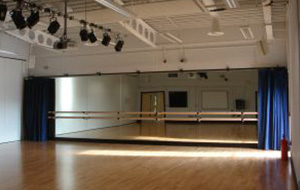 Some of the UK’s leading drama schools offering vocational training to students are set to increase their fees by £250 a year, after the government recently announced plans to raise the maximum that universities can charge. The reasoning behind this is unclear, and already institutions such as Guildhall School of Music and Drama and Rose Bruford College have confirmed their intention to raise fees to the new maximum of £9,250 from August 2017.
Some of the UK’s leading drama schools offering vocational training to students are set to increase their fees by £250 a year, after the government recently announced plans to raise the maximum that universities can charge. The reasoning behind this is unclear, and already institutions such as Guildhall School of Music and Drama and Rose Bruford College have confirmed their intention to raise fees to the new maximum of £9,250 from August 2017.
These changes will be the first time tuition fees have increased since 2012, when the cap for undergraduate fees rose from £3,290 to £9,000 per year. Training institutions which do not offer a degree qualification upon completion are not part of this, however many already charge similar prices for training with them. The new maximum fee will only affect schools funded by the Higher Education Funding Council of England, and does not apply to private drama schools such as Mountview Academy of Theatre Arts and Arts Educational Schools, yet will not mean these fees will not change too.
Whilst not yet confirming, Liverpool Institute for Performing Arts and East 15 Acting School have also said they are seeking to raise fees to the new maximum, while RADA, LAMDA, Bristol Old Vic Theatre School and Royal Central School of Speech and Drama have not yet confirmed whether their fees would remain the same for incoming students in 2017. The general argument seems to be the increase is crucial to enable schools to continue to offer high quality experiences, due to the the resource-heavy requirements of such institutions.
For some schools, fees will not increase for existing students, but the 2017 intake will bear the force of this increase, with applications rising year on year. The government has claimed the new maximum fee charge was being implemented so universities could keep fees in line with the inflation that is forecast, however this does not indicate a blanket increase across costs, fees and wages.
Difficulty vs execution
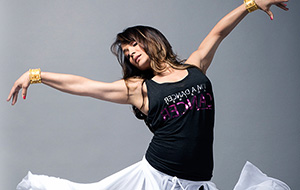 On the dance competition circuit particularly, many competitors can be seen attempting dance moves and combinations beyond their ability, decreasing the value of their performance in the process. For many competition judges, they would prefer to see something simpler performed with greater artistry and skill, than something beyond the capability of the dancer on stage. Teachers may challenge their students in class with complex sequences in order to extend their skills, however on the stage it can be viewed as messy and amateur when it is not performed correctly.
On the dance competition circuit particularly, many competitors can be seen attempting dance moves and combinations beyond their ability, decreasing the value of their performance in the process. For many competition judges, they would prefer to see something simpler performed with greater artistry and skill, than something beyond the capability of the dancer on stage. Teachers may challenge their students in class with complex sequences in order to extend their skills, however on the stage it can be viewed as messy and amateur when it is not performed correctly.
As a result, many may argue difficulty should not come before the execution of a dance move. There is no doubt that competitions demand more and more from competing dancers, but ultimately it is more important to execute the dance well, with correct technique and high quality, rather than struggle with something the teacher has given the student that is too challenging. Dance on the commercial side of the industry continues to want dancers that are stronger, faster and that can kick higher yet this can come at the cost of injury, and other dancers replicating this too.
Many students attempt movements they have seen other, perhaps older dancers perform, and long before their coordination and strength is properly in place in order to support them. Dancers’ bodies need time and repetition to successfully develop technique and skill, and often dancers can experience bad habits and injuries that plague their bodies as a result from being pushed too fast and sidestepping vital technical training.
In order to safeguard younger dancers against injury and incorrect training, the majority of teachers and competition judges would much prefer to see simpler, cleaner lines and steps onstage in choreography than tricks. Adequate dance training is key to achieving and performing.
The Role of the Dance Examiner
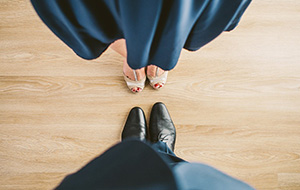 Dance exams can be a scary business, however they can also be the highlight of the year. They are a chance for dance students to demonstrate their dance ability to an objective eye, showing how much they have worked on what they have learnt, be it pre-primary or advanced 2. They can be just as scary for teachers, hoping that their hard work with their students will be observed by the examiner, and it will carry the students through their exam session.
Dance exams can be a scary business, however they can also be the highlight of the year. They are a chance for dance students to demonstrate their dance ability to an objective eye, showing how much they have worked on what they have learnt, be it pre-primary or advanced 2. They can be just as scary for teachers, hoping that their hard work with their students will be observed by the examiner, and it will carry the students through their exam session.
Dancing is of course fun, practised for enjoyment first and foremost, combined with dedication and hard work. Exams consequently require lots of work physically and mentally, and when it is over there is often a huge sense of relief! Exams can be strange performances, solely for the unknown examiner who is the main focal point in the room. It is often that itches and sweat become even more uncomfortable in an exam, dancing under close scrutiny.
The examiner must be impressed both technically and artistically, with the students demonstrating their adequate skill level in both. Despite this, examiners are not always as scary as they come across; teachers or tutors may have become examiners because they enjoy witnessing skills and giving teachings back to students and their dance schools, sharing knowledge and ensuring the standard of dance remains high. Ultimately they want to mark students up knowing they have done their best, contributing to the evolving education of the next generation of dancers and teachers.
Many examiners are sent on journeys to examine students far away from the areas in which they work. It can be a long time away from their own students and dance school if they already teach, as well as their own home. Taking a positive from this, it is important that examiners travel to different areas or perhaps even countries; the exam they are observing will be of the same high standards to adjudicate, demonstrating the consistency of teaching and expectation in dance across the world.
MoovBank: a Learning Platform
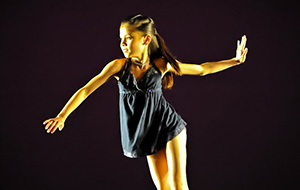 MoovBank, a brand new resource that BalletBoyz, will be launching on 21 September. It will act as a brand new dance education portal which will house filmed lessons to support specialist and non-specialist teachers deliver dance at Key Stage 2, 3 and 4. As digital lessons they will enable teachers to deliver a selection of creative and choreographic tasks to groups, with a specific focus on creativity at KS2, contact work at KS3 and choreography at KS4.
MoovBank, a brand new resource that BalletBoyz, will be launching on 21 September. It will act as a brand new dance education portal which will house filmed lessons to support specialist and non-specialist teachers deliver dance at Key Stage 2, 3 and 4. As digital lessons they will enable teachers to deliver a selection of creative and choreographic tasks to groups, with a specific focus on creativity at KS2, contact work at KS3 and choreography at KS4.
The lessons have been filmed using BalletBoyz company dancers in a mock class so teachers and pupils will be able to watch demonstrations performed by the company, view clips of the Boyz’ stage performances and gain access to behind the scenes rehearsal footage including masterclasses with the dancers and interviews with choreographers. All resources will be housed within the online platform MoovBank, designed not only to increase physical activity and creativity, but also help pupils build trust, work together as a team and problem solve through movement. Alongside digital learning, also available will be downloadable lesson plans outlining learning outcomes and links to the curriculum.
The KS2 resource features lessons that will guide teachers and students through a selection of creative tasks to help pupils generate new and unique movement that can then be assembled to form a short piece. These lessons will be themed, based on the City, technology, the sea, jungle and desert with cross-curricula links to geography and technology.
KS3 focuses on contact work and guides teachers and students through a series of tasks to develop work with the floor and a partner. Tasks include lifting, counterbalance and travelling floor-based movement linking clearly with the Company’s repertoire. Students then have the opportunity to assemble tasks to create their own choreography.
KS4 then focuses on the development of dancers at BTEC, GCSE, A level and even first year undergraduate students. Lessons guide students through possible approaches to choreography looking at music, text and image as stimuli whilst incorporating BalletBoyz footage.
